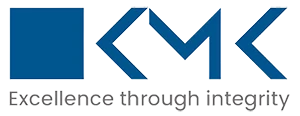Startup Success Starts with These Financial Ratios — Know Them, Track Them, Grow Faster

Ratios are numbers that help a founder understand the financial health, profit performance, and efficiency of the business’s operations. Ratios are calculated using the financial statements, specifically the Income Statement, Balance Sheet, and Cash Flow Statement.
Whether you’re building a SaaS product, launching a healthcare solution, scaling a fintech venture, or running an e-commerce brand, as a founder, understanding and routinely tracking key financial ratios is very important. Please look at the following reasons to understand why:
- Build credibility with Investors – It’s how you demonstrate real value to investors and make your growth story credible. Knowing your financial ratio definitions also helps you nail a winning pitch. You may have clean financial health and a solid financial model, but you’ll also be prepared for the trick questions potential investors have in mind for you.
- Helps with tracking delegated responsibilities – One of the other significant reasons to stay on top of your numbers is to track the success of delegation. After delegating responsibilities, it is imperative to track them using financial ratios to ensure the desired results are obtained.
- They Highlight Issues Early – Ratios serve as early indicators of potential future outcomes, allowing a founder to take proactive actions. This provides the business owner with the opportunity to better understand the strategies in light of current results.
- Guide better decisions – Ratios offer a lens to evaluate whether a current strategy is working or needs a course of correction. For example, if your gross margin is shrinking, it may reveal inefficiencies in production, pricing, or supplier contracts, pushing you to streamline operations or revisit pricing models.
- Turning numbers into Insights – While Financial statements can be a little tricky to understand, ratios are less overwhelming and easier to comprehend. For example, Burn Rate makes it crystal clear how fast you’re spending money and how long your startup can keep running.
Let’s now dig into and understand various types of rationales that serve different purposes and help one solve problems.
Cash Burn Rate and Runway
As soon as the company receives the initial capital, it becomes crucial to monitor the rate at which it is spending the money. Cash burn rate and the Runway are fundamental indicators to track.
Gross burn rate: This refers to the total amount of money spent in a given month, regardless of the source. This includes all the operating expenses such as salaries, rent, utilities, marketing, etc.)
Net burn rate = This is the amount of money that your business loses in a given month, after accounting for any revenue that you generate. It is the difference between your gross burn rate and your revenue. After arriving at the monthly burn rate, the next important step is to calculate the Runway of cash in months. The computed rates from above can be inserted into the following formula to estimate the implied cash runway, which, as a reminder, is the number of months a company has remaining until its cash balance reaches zero.
Implied Runway = Cash Balance / Burn rate
Description | $ |
Existing on-hand Cash balance | 1,000 |
Add: Funds raised | 10,000 |
Total Cash Balance (A) | 11,000 |
|
|
Monthly Cash Sales | 600 |
Monthly Cash Expenses (B) | (1,100) |
Net Cash Inflow/ (Outflow) (C) | (500) |
|
|
Monthly Gross Burn Rate = (B) | (1,100) |
Implied Gross Cash Runway in Months (A) / (B) | 10 |
|
|
Monthly Net Burn Rate (C) | (500) |
Implied Net Cash Runway in Months (A) / (C) | 22 |
Alternatively, it can be calculated as below:
Burn rate = (Starting Balance – Ending Balance) / number of months
Monthly recurring revenue (MRR)
This ratio is critical for subscription-based businesses, particularly SaaS companies.
MMR refers to the recurring revenue that a business generates each month from its active subscriptions.
The financial formula to calculate the MMR: Total number of active customers * Average revenue per account
The above formula can be expanded for use to track various plans, e.g., Upgrade MRR, Regain MRR, Churn MRR, etc.
The higher MRR represents a more substantial revenue base and happy customers, signaling long-term success.
Profitability Ratios
These determine the efficiency at which the company can generate profit relative to its sales, assets, and equity.
Ratio | Formula | Interpretation |
Gross Margin Ratio | Gross Profit | Gross margin is a simple calculation that determines the percentage of sales revenue your business retains after deducting the costs directly associated with producing or delivering those sales.. This ratio enables businesses to compare their gross profit to sales revenue. |
| Net Sales |
|
Net Profit Ratio | Net Income | It provides the final picture of a company’s profitability after all expenses, including interest and taxes, have been taken into account. |
| Net Sales |
|
Return on Assets (ROA) | Net Income | This ratio helps to show the percentage of net earnings relative to the company’s total assets. |
| Total Assets |
|
Return on Equity (ROE) | Net Income | This represents the total return on equity capital, indicating the firm’s ability to generate profits from equity investments. Stock analysts and investors particularly watch the ROE ratio. |
| Total Equity |
|
Liquidity Ratios
Liquidity ratios measure how quickly your company can convert its assets to cash to cover its debts. It is a critical ratio that helps asses company’s financial health over time and compare it to industry competitors.

The ideal current ratio of a financially healthy company should fall between 1.5 and 2.0.
This indicates that the company has 1.5 to 2 times more current assets than current liabilities.
A quick and cash ratio of 1.0 or higher is considered ideal, indicating that a company has enough liquid assets to cover its current liabilities.
Conclusion:
Successful founders will use excellent accountancy services. With top-tier accountants and CFOs, you can build a business with a secure financial base and scale up safely. Let KMK be the partner you need to fulfill all your accounting and financial needs. By tracking these ratios, you can understand the impact of strategic choices — like hiring, expanding, or launching a new product — in real, measurable terms. It moves you from gut-based decision-making to data-driven leadership, which is crucial when resources are limited and every decision counts.

Lavina Gianani is an India-based Chartered Accountant with over eight years of professional experience. She began her career with a domestic textile manufacturing company and has since gained comprehensive, end-to-end expertise in U.S. Accounting and Taxation through her work at KMK.
She strives to apply her knowledge to meet client-specific needs while ensuring accuracy and attention to detail in every aspect of her work. Outside of her professional life, she enjoys cooking, exploring diverse cuisines, and spending time in nature.
Let’s Take Our Conversation Ahead
KMK is a top outsourced accounting and tax service provider. We offer end-to-end accounting and tax services for small to mid-sized businesses, with a team of 1000+ professionals, including certified public, chartered, and staff accountants.
USA:
651 N Broad St Suite 205, Middletown, DE 19709, USA
Phone: 310-362-2511
India:
300, Sankalp Square-3B
Sindhu Bhavan Marg,
Ahmedabad, Gujarat 380058
For Career: 91-98240-42996
Developed by Bluele | Copyright © 2025 | KMK Ventures Private Limited. | All Rights Reserved


